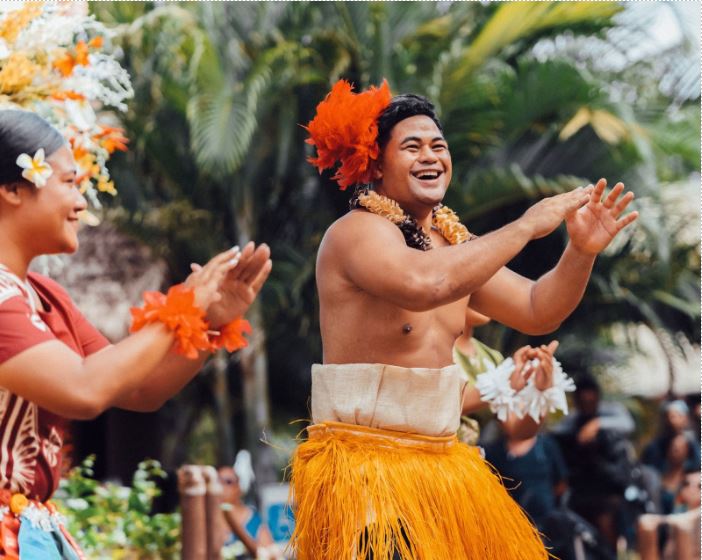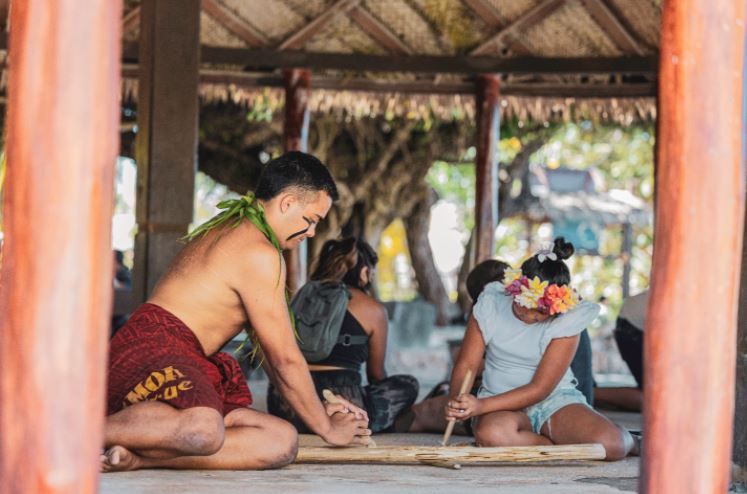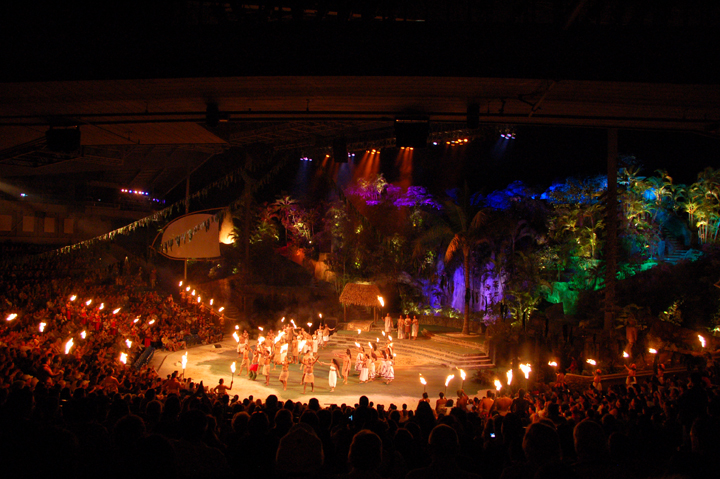Mahalo is a famous Hawaiian word which means “thank you”, or to express gratitude. This is one of the common greetings, rather like “aloha”, used in everyday life in the Hawaiian culture. People usually say this after a kind gesture or a positive experience such as receiving a gift or being served with a wonderful meal. Although the word is used more in normal, daily, scenarios mahalo has a far deeper meaning to the people of Hawaii. Mahalo means to “live in thankfulness for the abundant blessings of life.” Visitors who come to Hawaii will discover how this quality distinguishes not only the Hawaiians, but all Polynesians, from the rest of the world.

Beautiful Tongan ma’ulu’ulu performance at the Polynesian Cultural Center canoe show. Photo taken by Harold Pedroso.
Observing the Polynesian Culture Upclose
Having the opportunity to work at the Polynesian Cultural Center in fulfillment of my iWork program at Brigham Young University-Hawaii helped me to get a closer glimpse of this admirable quality of the Polynesian culture. The Center, located in the magnificent town of Laie on the North Shore of Oahu, is in itself a picturesque community worthy of mahalo. This is a common characteristic of the Polynesian islands, and I’d like to think that it stems from an outpouring of gratitude for the bounteous resources they have been given. As guests come to visit, they will be shown this spirit of mahalo through the Center’s cultural village experience with representations showcasing the distinct cultures of seven Polynesian cultures, namely Hawaii, Aotearoa (New Zealand), Fiji, Tonga, Tahiti, and Samoa. They will have the opportunity to immerse themselves into the fiber of Polynesian’s love for nature and culture with hands-on cultural activities, cultural demonstrations, music and dance.

Making fire with sticks is one of the cultural activities in Samoa village at the Polynesian Cultural Center. Photo taken by Harold Pedroso.
A Story of Family Devotion
One of the highlights of the experience at the Center takes place in the evening, with our evening show Ha: The Breath of Life. In this spectacular presentation, visitors are entertained with Polynesian cultural dances, music and stories with family as the overarching theme. As the Center describes it, “HA is a Pacific Isle saga of birth and death, love and family, tragedy and triumph.” The amphitheater, which seats almost 3,000, brings the show to a whole new level, including brilliant special effects, and an amazing multilevel stage!
As an employee at the Center, I have been able to witness a lot of people who have felt a deeper appreciation for family and experienced a greater sense of gratitude for life after viewing the show. We feel joy as families exit the Center holding hands and cherishing their precious moment together.

HA: Breath of Life, featuring Mana and his beloved Lani, celebrates the dances, music, cultures, stories, and devotions of the Polynesian people. Photo from PCC Archive.
Truly, Mahalo-ve (One Love, One Gratitude) is evident throughout the Polynesian culture and is what makes us a distinct community from the rest of the world. There is no wonder why people love being around Polynesians – they are so loving and filled with thankfulness in their hearts. I feel grateful for having the opportunity to witness that “one love, one gratitude” every single day as I fulfill my education in the university and as I carry out my duties at the Center.
 Bio of John Paolo Asetre
Bio of John Paolo Asetre
John is a senior majoring in hospitality and tourism management at Brigham Young University – Hawaii and is from the Philippines. He is currently working at the university’s IT operations department. Prior to that, John worked as an usher for the popular HA: Breath of life show.


This is exciting!
Yes, we were so pleased to be able to share this blog written by John Paolo Asetr!